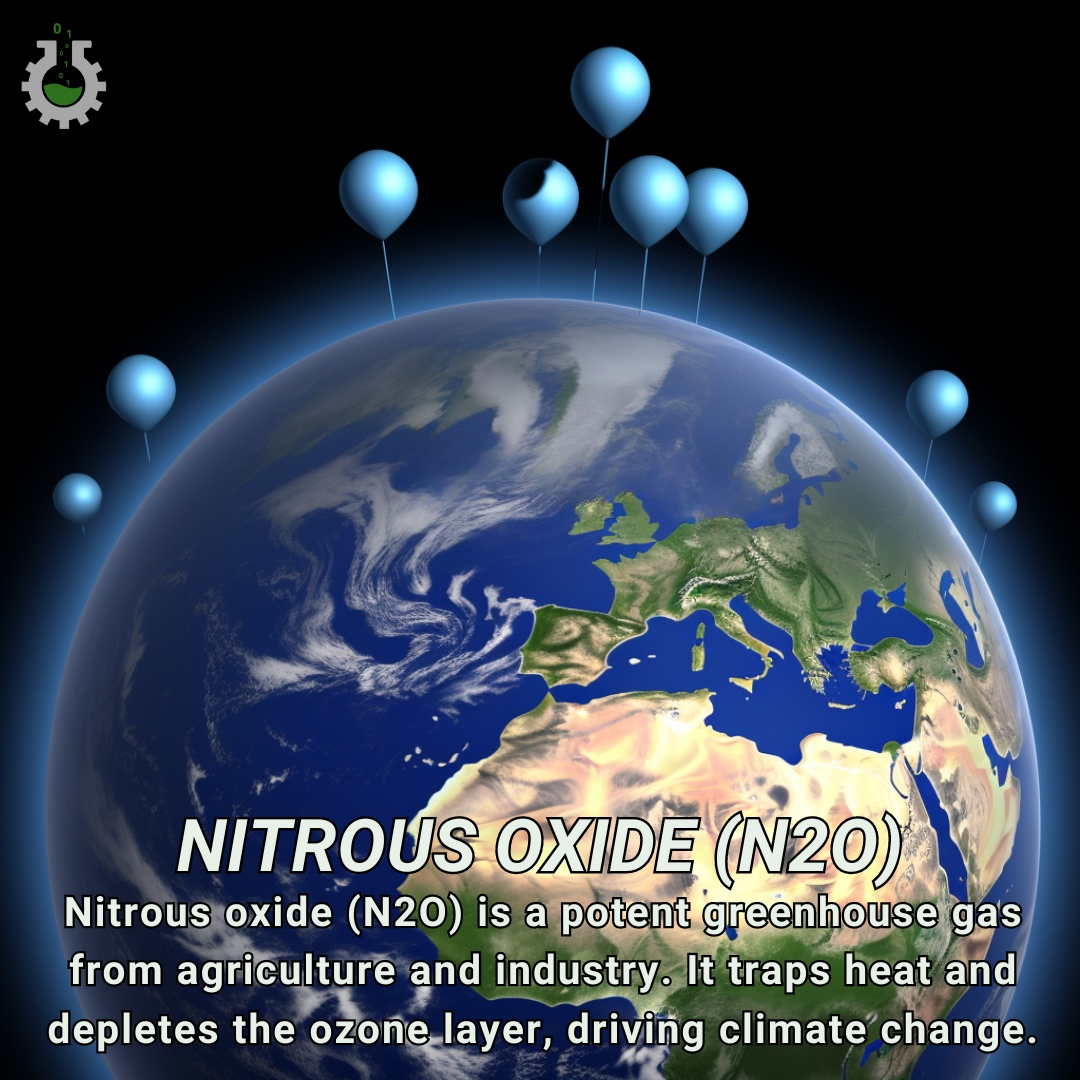June 10, 2024
Climate Change Poster Collection of the Day – Nitrous oxide (N2O)
Book a Demo
Today’s Climate Change Poster Collection highlights Nitrous oxide (N2O), colloquially known as laughing gas, is often associated with its use in medical anesthesia and as a propellant in whipped cream canisters. However, its environmental implications are far more grave and far-reaching. N2O is a potent greenhouse gas with a global warming potential approximately 300 times greater than that of carbon dioxide (CO2) over a 100-year period, making it the third most impactful greenhouse gas after CO2 and methane (CH4). This high potency in trapping heat in the atmosphere makes nitrous oxide a critical concern for climate scientists and environmental policymakers alike. The primary sources of N2O emissions are rooted in agricultural practices, particularly the extensive use of synthetic fertilizers and manure management. These agricultural activities contribute to over half of the global N2O emissions. When nitrogen fertilizers are applied to soil, soil microbes convert them into N2O through biochemical processes known as nitrification and denitrification. This transformation is a natural part of the nitrogen cycle, but human activities have significantly amplified the amount of nitrogen introduced into this cycle, leading to increased N2O emissions.
Furthermore, fossil fuel combustion and certain industrial processes, such as the production of nitric acid and adipic acid used in fertilizers and nylon, also release substantial amounts of nitrous oxide. The environmental impact of rising N2O concentrations is twofold: it not only exacerbates global warming but also contributes to the depletion of the ozone layer, which shields life on Earth from harmful ultraviolet radiation. The dual threat posed by nitrous oxide makes it an especially pressing issue in the context of climate change and environmental protection.
Addressing N2O emissions presents a complex challenge due to the diverse sources of emissions and the essential role of nitrogen in food production. However, several strategies can help mitigate its release. Optimizing fertilizer use through precision farming techniques and enhancing nitrogen-use efficiency are crucial steps. These methods involve applying the right amount of fertilizer at the right time and place to minimize excess nitrogen that could be converted into N2O. Additionally, advancements in agricultural practices, such as crop rotation, the use of cover crops, and the integration of organic farming methods, can also contribute to reducing N2O emissions. Cover crops, for instance, can absorb residual nitrogen in the soil, preventing it from being converted into N2O.
Moreover, policy measures and technological innovations play a vital role in addressing N2O emissions. Governments can implement regulations and provide incentives for practices that reduce N2O emissions, such as funding for research into alternative fertilizers and farming methods. Technological advancements, such as the development of nitrification inhibitors that slow down the conversion of nitrogen into N2O, can also be part of the solution.
As the world grapples with the multifaceted challenges of climate change, understanding and mitigating the impact of nitrous oxide is crucial for achieving long-term environmental sustainability. It requires a concerted effort from farmers, scientists, policymakers, and the global community to develop and implement effective strategies. By addressing nitrous oxide emissions, we can take a significant step towards protecting our planet for future generations, ensuring a healthier and more sustainable environment for all.
Discover an inspiring collection of climate change poster.



